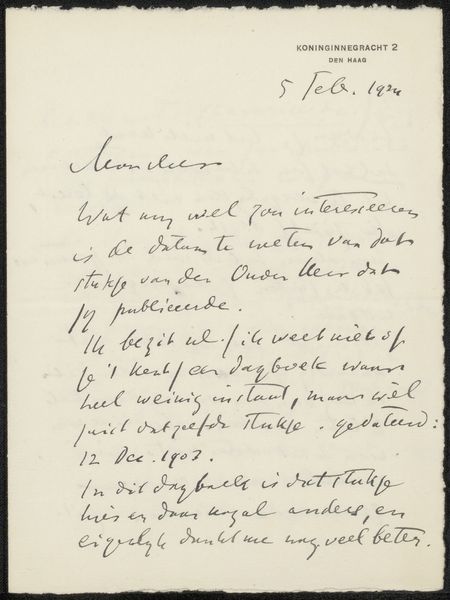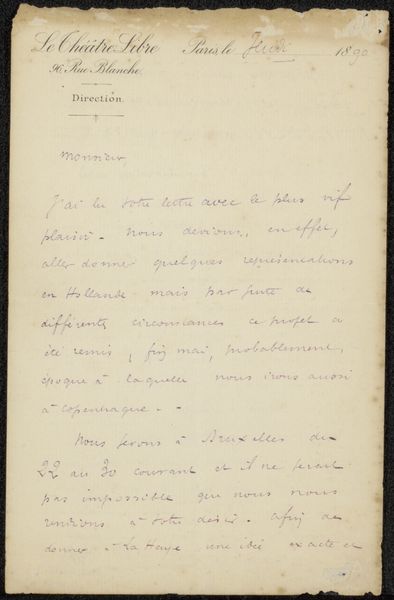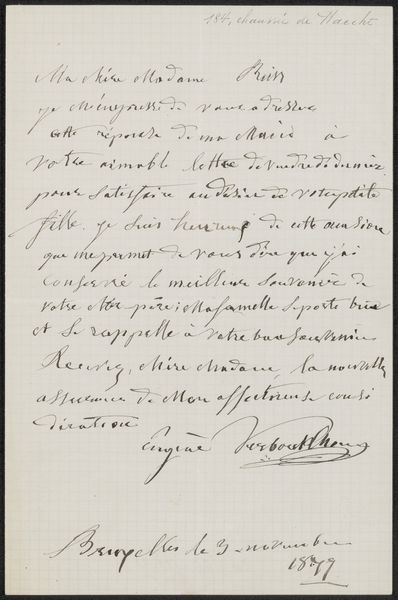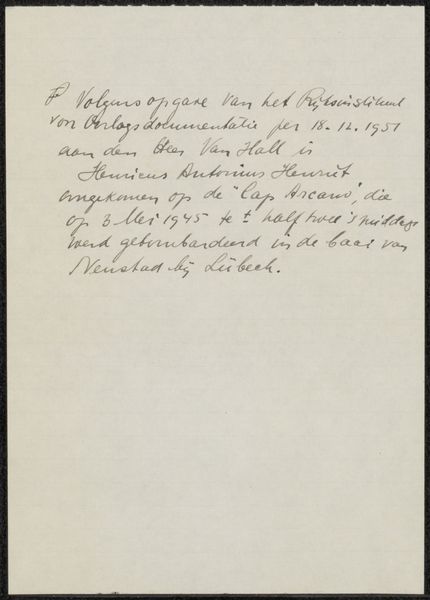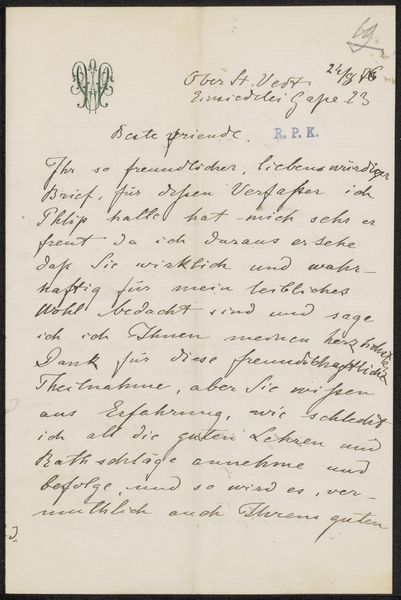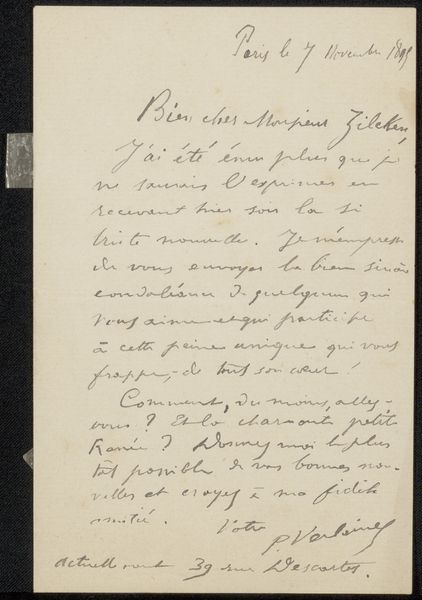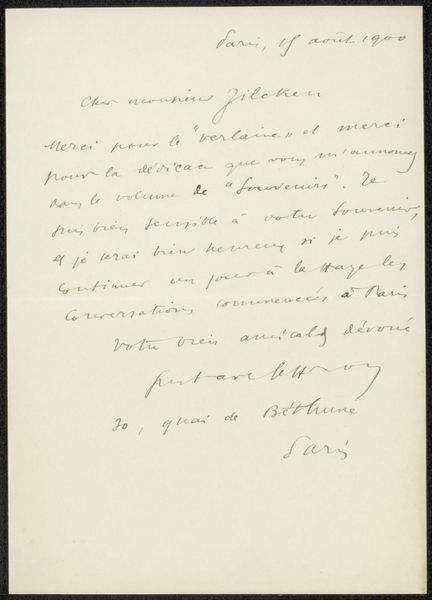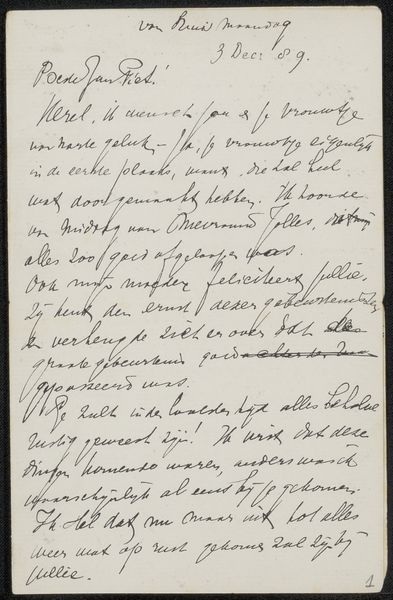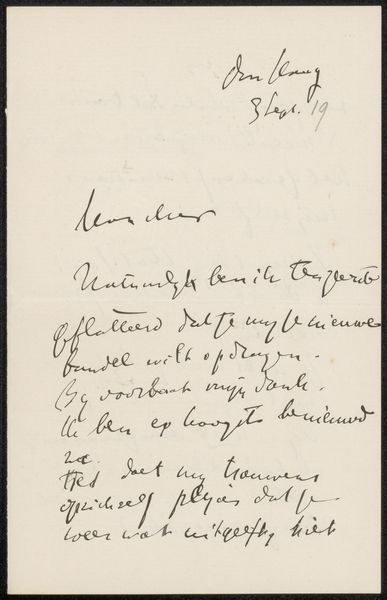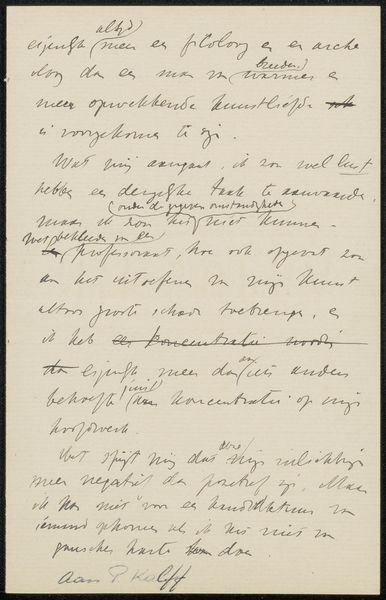
drawing, paper, ink, pen
#
portrait
#
drawing
#
hand written
#
script typography
#
hand-lettering
#
old engraving style
#
hand drawn type
#
hand lettering
#
paper
#
ink
#
hand-written
#
hand-drawn typeface
#
thick font
#
pen
#
handwritten font
Copyright: Rijks Museum: Open Domain
Editor: This drawing, "Brief aan Jan Veth" by Isaac Israels, created sometime between 1875 and 1925, is a letter written in ink on paper. It’s quite an intimate piece, seeing someone’s actual handwriting like this. What social dynamics can you perceive in it? Curator: This letter, now preserved in the Rijksmuseum, offers a unique window into the art world's social network at the turn of the century. Think about it: correspondence was a key mode of communication. Who were Jan Veth and Isaac Israels to each other? Was Veth an art critic? A fellow artist? The tone suggests a degree of familiarity, perhaps even dependency, especially if we consider the role of patronage at the time. It all indicates how networks shaped the artistic landscape. Editor: That's fascinating! So the letter isn't just about the words, but about who's writing and who’s receiving it. Curator: Exactly. And the act of writing itself. The hand-written form suggests the unique human interaction in times without email, which shapes my response to it, making the message intimate, a personal interaction with the writer. Have mass reproductions changed our expectations about originality? Editor: I suppose we are further removed now. How does the historical context influence how museums choose to display letters like this one? Curator: Well, museums aren't just displaying art; they are displaying history and relationships. Exhibiting this letter highlights the importance of personal connection and historical interactions that formed the cultural world of that time. Also it highlights the development of the public perception of art, and how the network of that period helped shape how it’s regarded today. Editor: That's really changed how I see it; it’s more than just ink on paper. Curator: Indeed! By considering its original setting, it offers insight into both art and society.
Comments
No comments
Be the first to comment and join the conversation on the ultimate creative platform.
